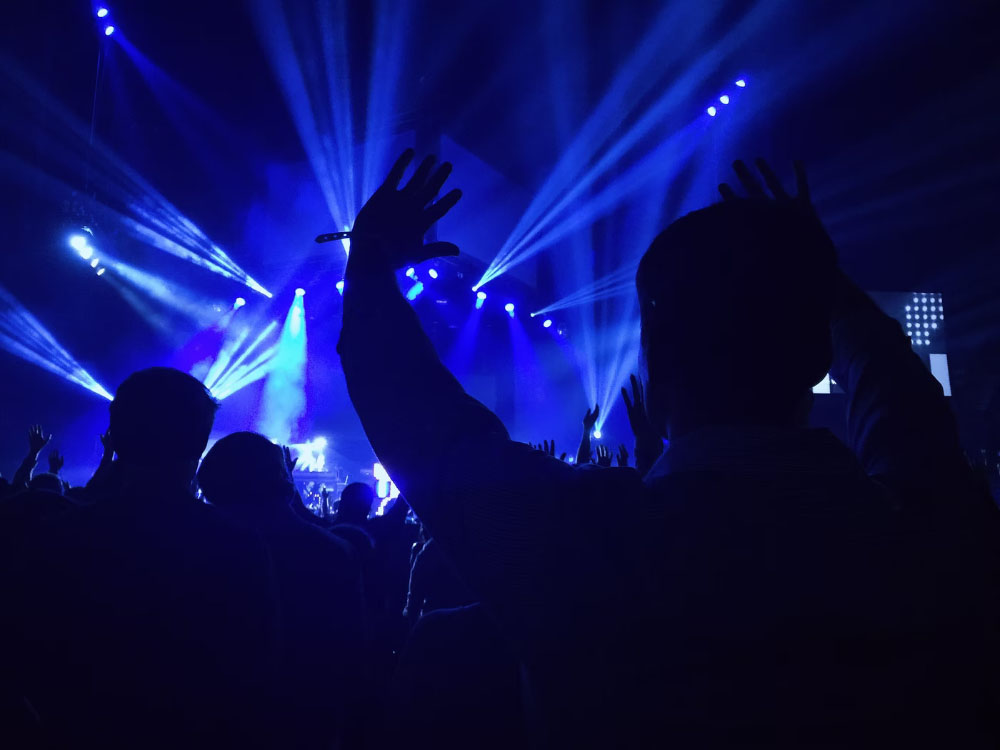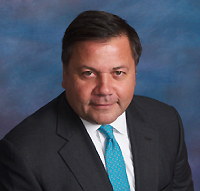Scott Carroll is Vice President and Program Director of Take1 Insurance.
The entertainment and live events industry have been through a nightmare scenario as the COVID-19 pandemic brought everything to a halt. Virtual events have helped fill gaps, but, ultimately, the desire of people to experience live events in person cannot be denied. Now, with vaccines rolling out, the prospect of getting back to some semblance of normality is becoming a reality.
But there are many pitfalls. The industry can’t just flip a switch and go back to where it was in 2019. The world has changed, and the industry must change with it. The good news is that there are many strategies to “shake off the rust,” and reopen our industry safely and productively.
First, we must recognize that the workforce of the industry has changed radically in both quantity and quality. According to market research firm IBISWorld, there were more than 270,000 concert and event promotion employees in the U.S. as of February 2019. A year later, that workforce had shrunk to around 148,000, a drop of 55 percent.
Even as we start to recover, the workforce totaled 190,000 in February 2021. When will it return to pre-COVID numbers? Even with steady growth, not before 2022, if then. Many experienced workers will not be returning. They were forced to seek alternate employment and have moved on with their lives. Plus, the employment model itself has changed from full time staff to freelance gig workers. Looking at the two largest concert producers underlines this dramatic story.
With all this upheaval, the live events workforce, particularly technical workers, face enormous challenges.
1) The pool of experienced workers has shrunk dramatically. Many are financially stressed after a year of turmoil as well as professionally “rusty” and in need of refresher training as the industry gets back up to speed.
2) Many new workers are entering the pool without any training or experience, especially when it comes to safety on the jobsite. Their inexperience can create risk.
In this article, we discuss strategies to go back to work, while managing risk. While there are many strategies to consider, the most crucial is safety.
Always Number One
Safety must be the primary concern as live event producers welcome back the public. Having events and holding them safely, where people are comfortable going into group settings, is the key to bringing the industry back. That applies from the professionals holding the events to the people attending those events. We need to have events that are sustainable, and given all we’ve been through, we can’t afford more shutdowns or setbacks.
As part of this ever-present concern, producers must recognize that while we’re able to open up in certain areas, some of their constituents may not be on board with current CDC guidelines. It’s almost like producers have to respond to psychology, not science. They still must take into consideration when putting plans together that certain people may not be comfortable working with certain other people in an office space, on a stage or at a venue.
Speaking of employees, proper training for industry veterans and newcomers alike should also be a top priority. That includes hiring the right employees and educating them around the exposures and controls that they’re going to be encountering on the job. Let’s face it, new industry hires as well as experienced workers would benefit from a refresher course after the long COVID shutdown.
Rust after such a long layoff can be extremely dangerous. We spent 12 months quarantining. The question now is how do we go back and not worry about the activities that were once second-nature, like being onsite with a lot of potentially dangerous equipment? It’s the kind of muscle memory stuff that we were very good at in the past that now needs to be refreshed. It’s only natural after being away for as long as we were.
It’s the responsibility of producers to protect their employees by making sure they have the tools to succeed. The last thing you want to do is come out of this, make it through this pandemic as a company, and then have a major accident. Each and every live event decision-maker is going to be a critical part of this industry moving forward. Let’s not put a black eye on at the start.
Yes, some of the training may be basic, but for new hires, it’s essential. Even if you’re experienced, how many times have you sat through seminars or meetings on some subject you know fairly well, and you are reminded of something you had forgotten, or heard something that you know intuitively, but you heard it in a different way? It makes you rethink.
In the excitement of re-opening, of being back on the road again, mistakes can happen more easily. If the mistakes are serious enough, they could cause a job shut down or a serious injury to a worker — or many workers.
Training, such as the opportunity being offered by the Events Safety Access Training, is a wonderful tool. A lot of great information on reopening and COVID-19 compliance protocols are consolidated in one place.
A New Challenge
“Health theater” is important precisely because it can still be difficult to enforce the simple rules we have known for months. As people become fatigued and just want to do what they used to do, face coverings slip off their noses and below their chins. Pushback on distancing and mask wearing has gotten so common that the CDC has published guidance to address workplace violence associated with enforcing COVID-19 policies.
Because we’re a country of great diversity, we have all manner of people respecting the science and not respecting the science. And the challenge we all face is this: will those who do not respect the science pull us backwards into a full lockdown?
Does that mean we can only have vaccinated people show up at events? I don’t think that’s who we are as a society. I think we need more than one solution. Either you’re vaccinated or you’re not infected. And that means that you’re vaccinated or in a rapid antigen test, you’re not showing signs for COVID.
The other question is what can you do as a live event producer to ensure the safety of your customers? Well, there’s plenty that can be done.
— Make sure your air handling system is up to current needs.
— Ensure your filtration system is up to the latest standards.
— Train your staff to know what they need to do to mitigate pathogen risks.
— Institute a timed entrance and exit policy.
— Create a system that ensures that non-compliant mask-wearers are prohibited from entering.
Masks in particular have been and should continue to be of the highest importance. We recommend a no-entry without a mask policy. We believe science indicates the best way to stop transmission from one person to the next, either a receiver or an expeller, is to wear a mask.
Vaccines, on the other hand, are a bit more difficult because of vaccine resistance in the population. We’re going to have audiences with a very low risk threshold, and they need to know that we honor and respect their low threshold and have given them a way to enjoy whatever that event might be. And there are going to be audience members who are the opposite of that, and they’re going to need a space where they can enjoy the show. I don’t think the industry has a choice but to account for both groups.
Does that mean separating the vaccinated from the unvaccinated? That would be tricky. But it is already being done in some areas.
There’s also the issue of artist safety. Because any activity involving deep breathing and forceful exhalation tends to release respiratory droplets farther than usual, six feet of separation may not always be enough. For example, singers and wind and brass players may need greater distances within their sections, and between the players and their audience.
Always Have A Plan
In this industry, you always need multiple plans of action. One of the first things I discuss with clients are their contingencies, backup locations and covered locations to ensure they can always move their production forward. For example, if a production is being put on at an outdoor location and a weather event comes in, they should have another location on deck or a robust refund/rescheduling policy.
This is a time for flexibility. One of the things that might serve the industry well is the recognition that we’ve got to stay malleable. We need contingency plans for our contingency plans. Let’s try to do a show, but what happens if we get to a place where there’s a vaccine passport, how do we implement that? Or what happens if we must delay, how do we implement that? Or if we must move locations. Don’t stop making plans to do the show, but while you’re making those plans, be making your backup plan, and your backup-backup plan. So that we can keep moving forward. We can’t give up.
Passports & Compliance Officers
On the topic of passports, the UK has instituted a Safety Passport requirement. Every crew member, every manager of a live event in the United Kingdom must present their Safety Passport credential to get onto a jobsite. In this manner, the UK again is way ahead of the United States.
They’re also ahead of us on Risk Assessment. Every film, TV show and production has dedicated safety specialists who write up specific Risk Assessments and Safety Protocols for every project. We don’t do that here in the United States, but this is our time to get it right.
In many states COVID-19 compliance requires a compliance officer. Businesses can either train somebody who’s currently on their staff, or go out and get somebody who’s gone through COVID compliance training. That person makes sure that the COVID protocols are being followed.
In the insurance industry, we know the value of a knowledgeable risk manager. We’ve worked with safety and risk managers for years and they do an effective job in implementing safety practices in live entertainment. It’s been slow in coming and COVID, as unfortunate as it is, will open more avenues to health and safety specialists on our productions.
If there’s one positive thing that’s come out of this pandemic, it is to shine a light on how important risk management services really are. In the past it was kind of a ‘nice to do’ thing because risk mitigation is very hard to quantify if nothing happens. It ends up on the bottom line as a production cost, but the industry sometimes forgets that it’s a savings as well that can translate into reductions in insurance premiums.
Looking Ahead
It’s important to recognize that we’re going to enter back into business in a less-than-stable state. Live event workers have been parked now for greater than a year and their intuitive and instinctive nature of how they do their job has been dulled. Forklift drivers, riggers, production managers, bus drivers, truck drivers, all of them have lost their muscle memory. They’re in a different place emotionally. They’ve been scarred. They’re going to come back with PTSD, anxious and nervous about how to do their jobs safely and securely. They’re going to come back confused about the environment because they’ve been out of it for so long, and this is a heightened period for accidents to happen.
It’s a dangerous time, these first few shows, the first six months, as the industry rebuilds it’s instincts. It’s important that the leaders in the live event space, the leaders in the vendor provisioning space, the crew chiefs —everybody — take a breath. And, everybody, please recognize that we’re all coming from the same place.
I call on the live event leaders, crew chiefs, and vendor/owners to make room for people to get back on their feet, try to embrace that, try to prepare how to answer those questions, try to make everyone feel stronger than they are, coming out of the shadows.















